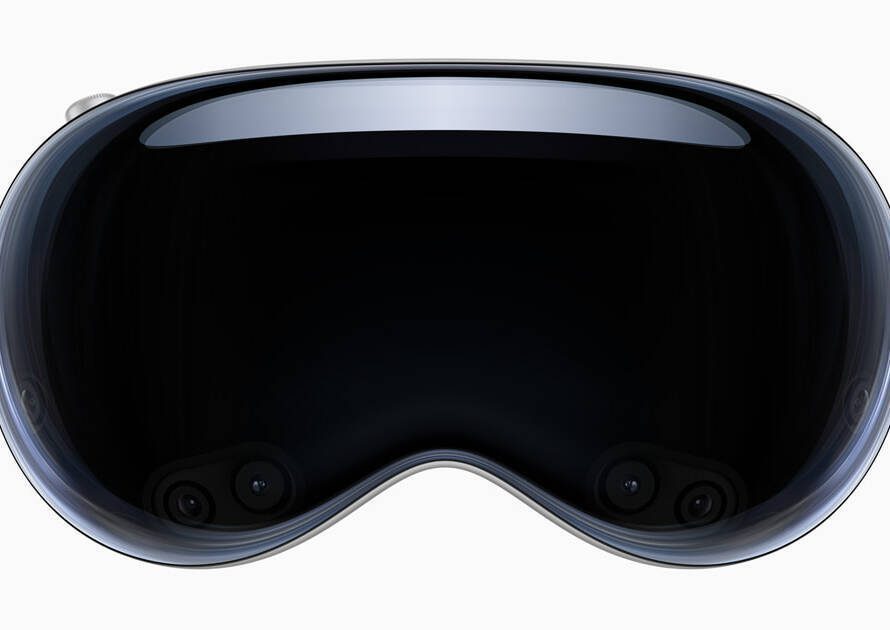You can back up your iPhone, then restore all your data, through iTunes, iCloud, Finder, or Google One. Here’s how.
Max-Tech I.T Solutions
Backing up your iPhone is always a good idea. Maybe your phone is misbehaving and you hope to restore it to factory conditions and then apply the latest backup. Perhaps you’re setting up a new phone and want to transfer all your current data. You may also just want to back up certain data for safekeeping. You can back up your iPhone, and then restore the data from that backup, when you need it most.
How you back up your phone varies by platform. Windows users (and those running older versions of macOS) can back up their phone through iTunes or iCloud. If you’re running macOS Catalina or higher, turn to the Finder application. You can also bypass your computer entirely by backing up your phone to iCloud. Subscribers to the Google One cloud storage service can also back up specific iPhone data, including contacts, calendar appointments, and photos.
Cloud Storage vs. Local Backup
There are pros and cons for each method. Using iTunes or Finder means you don’t have to rely on the cloud, though it also means you can restore the backup only from the Apple account on your computer. If your computer crashes, there goes your backup. The good news is that you can encrypt an iTunes or Finder backup if you want to back up your passwords, health information, and other sensitive data.
If you use iCloud instead, your backup won’t be affected by computer problems, is automatically encrypted, and is available anywhere. You can even back up to iCloud and restore the data directly from your phone, so you don’t need to go through iTunes or Finder. Unfortunately, if your backup uses too much data, you may need to upgrade to a paid iCloud account.
Apple doles out 5GB of iCloud space for free. The paid plans give you 50GB of storage for 99 cents a month, 200GB for $2.99 a month, or 2TB for $9.99 a month. For example, my 512GB iPhone 14 Pro with around 190GB of data required more than 20GB of space on iCloud for its backup, so I needed the 50GB storage plan just to get started.
Google One is another cloud storage option, but it comes with certain limitations for iPhone users. You can only back up your contacts, calendar, photos, and videos. Your apps, settings, and other items won’t be included. There is also no direct way to restore this data through the Google One app on your iPhone. Google One is available for free with 15GB of space or as a paid subscription with 100GB to 30TB of storage.
Back Up and Restore Data With iTunes
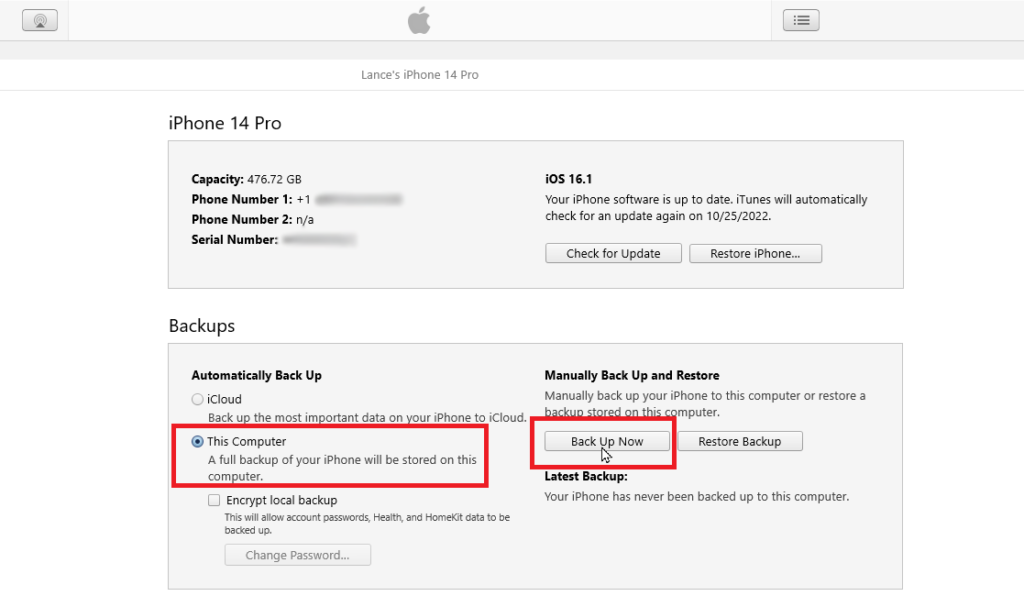
First, connect your phone to your computer and fire up iTunes. Click the icon for your phone, then make sure the option for This Computer is selected in the Backups section. Click the Back Up Now button, and iTunes backs up your phone to your computer. After the backup is completed, the timestamp under Latest Backup indicates the date and time of your most recent backup.
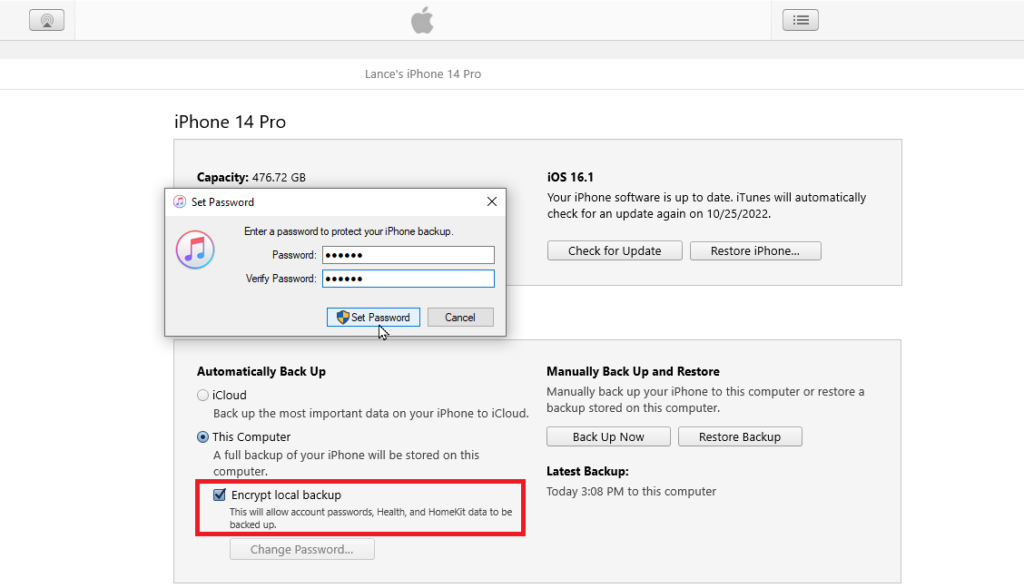
If you want to back up passwords, Wi-Fi settings, website history, and health data, you’ll need to encrypt the backup. Check the box next to Encrypt local backup. Enter a password and click Set Password. With encryption enabled, iTunes should immediately start backing up your phone. If not, click Back Up Now.
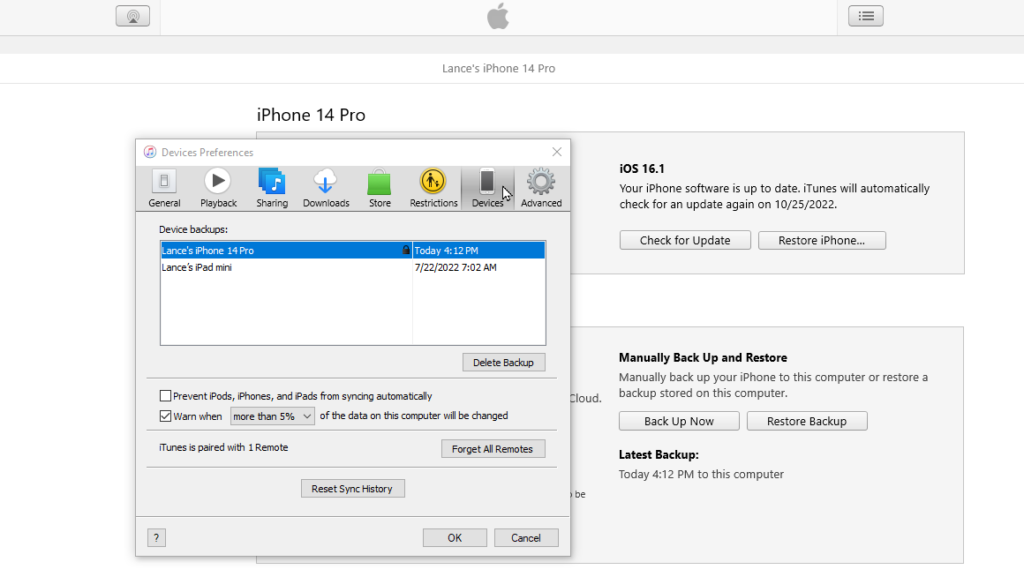
After the backup is finished, you can confirm that it was encrypted. Go to Edit > Preferences in the program’s top menu. In the Devices Preferences window, click the Devices tab. A lock icon next to a backup indicates that it was encrypted. As long as you keep the encryption option enabled, all future backups will be encrypted. To stop encrypted backups, uncheck the box next to Encrypt local backup and confirm your encryption password.
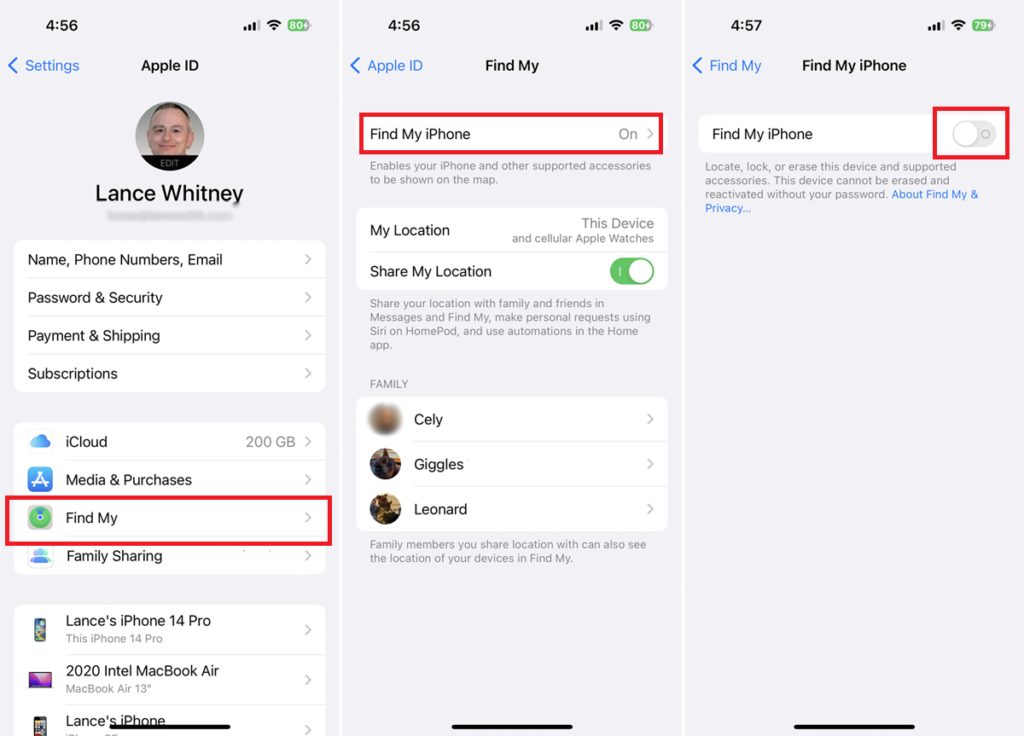
Now let’s say you need to restore your iTunes backup, either to the same phone or to a new device. Before you can restore a backup to an iPhone, you need to disable the Find My iPhone feature. On your phone, go to Settings and tap your name. Open Find My > Find My iPhone and disable Find My iPhone. Type your password, then tap Turn Off.
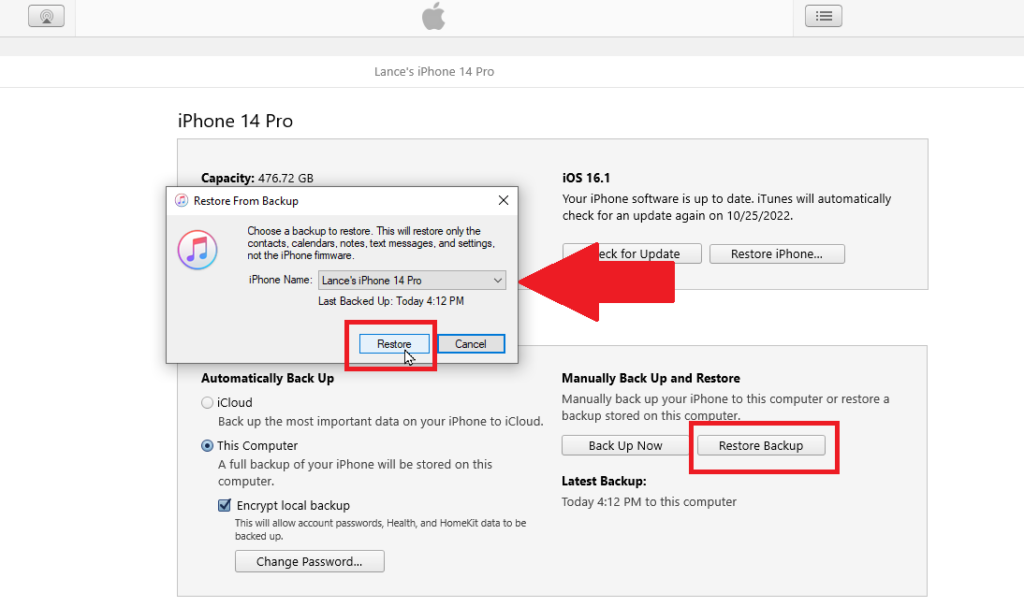
You can then connect the phone to your PC. Click the icon of your phone, then select Restore Backup. When the dialog box pops up, look to the time and date to make sure you have the correct backup selected. If not, click the drop-down menu and pick the backup you want to restore, then click Restore. If the backup was encrypted, you will now need to enter the encryption password. iTunes will then start restoring your phone.
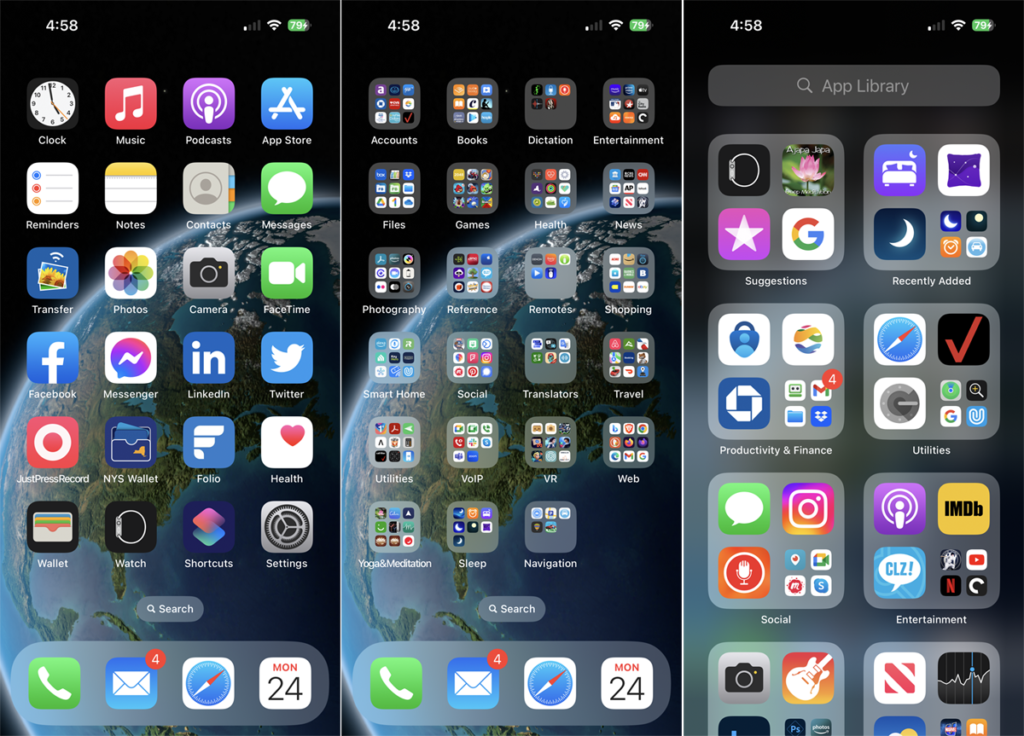
Sign into your phone when prompted. After the restoration finishes, sign in again. You may need to wait for all your apps to be updated and accessible. You can then make sure all your data is intact.
Back Up and Restore Data With Finder
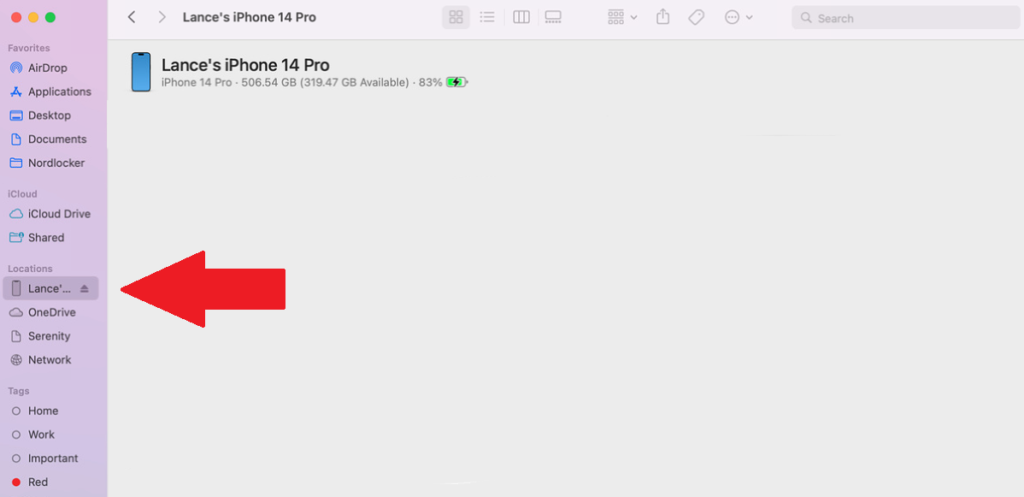
If you have a Mac running macOS Catalina or higher, you use Finder instead of iTunes to back up and restore your iPhone. To set this up, connect your iPhone to your Mac, open Finder, then click your phone under the list of locations. The first time you do this, you will need to click the Trust button on Finder. You must also tap Trust on your phone and enter your passcode.
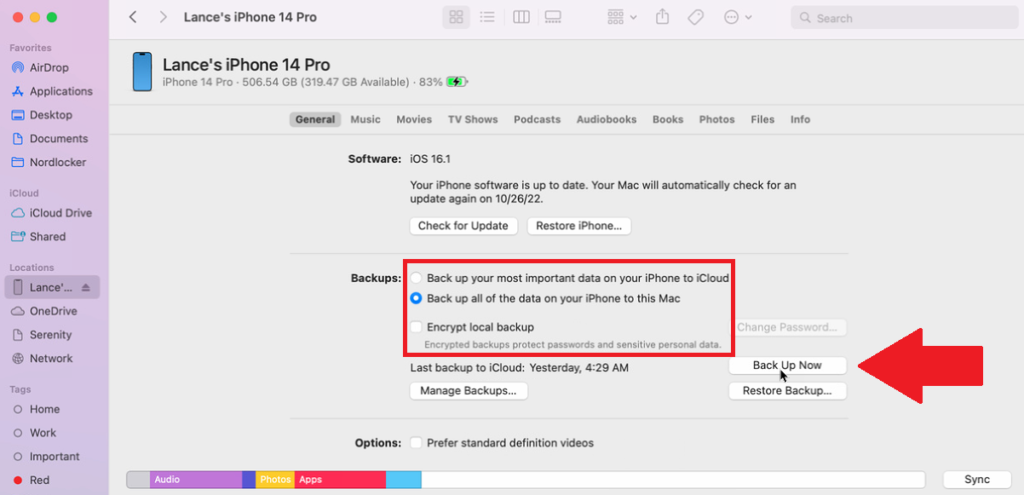
The next steps are similar to those in iTunes. Under the General tab, choose whether you want to back up your data to iCloud or store it locally on your Mac. You can also opt to encrypt the backup if you check the box next to Encrypt local backup. When you’re ready, click Back Up Now.
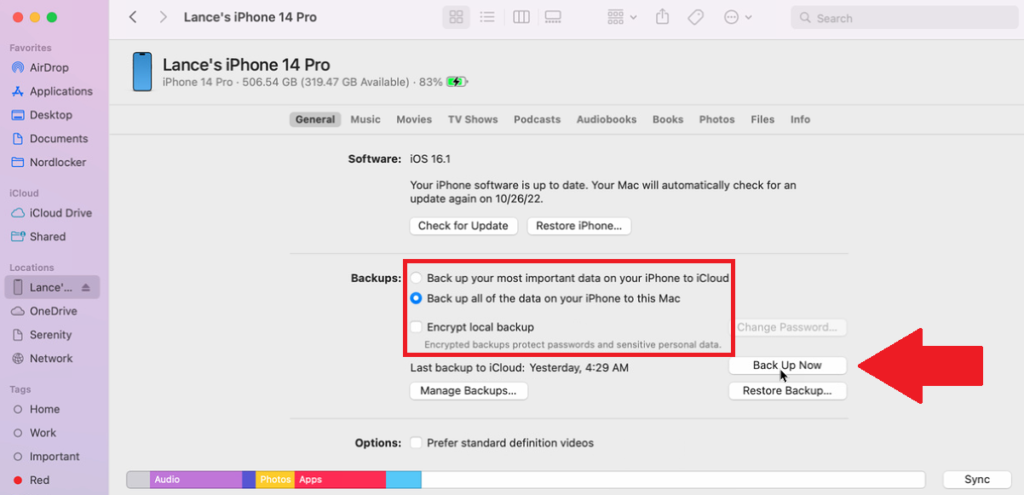
When the backup is in progress, the buttons in the Backups section are grayed out. A status message and the graph at the bottom also show that your iPhone is being backed up. When the backup is complete, the buttons become available again, and the date for the Last backup on this Mac will indicate today and display the time.
To restore your phone from the backup, click Restore Backup. Choose the correct backup from the drop-down menu and click Restore. Wait for the restore to complete and then sign back into your phone.
Back Up and Restore Data With iCloud
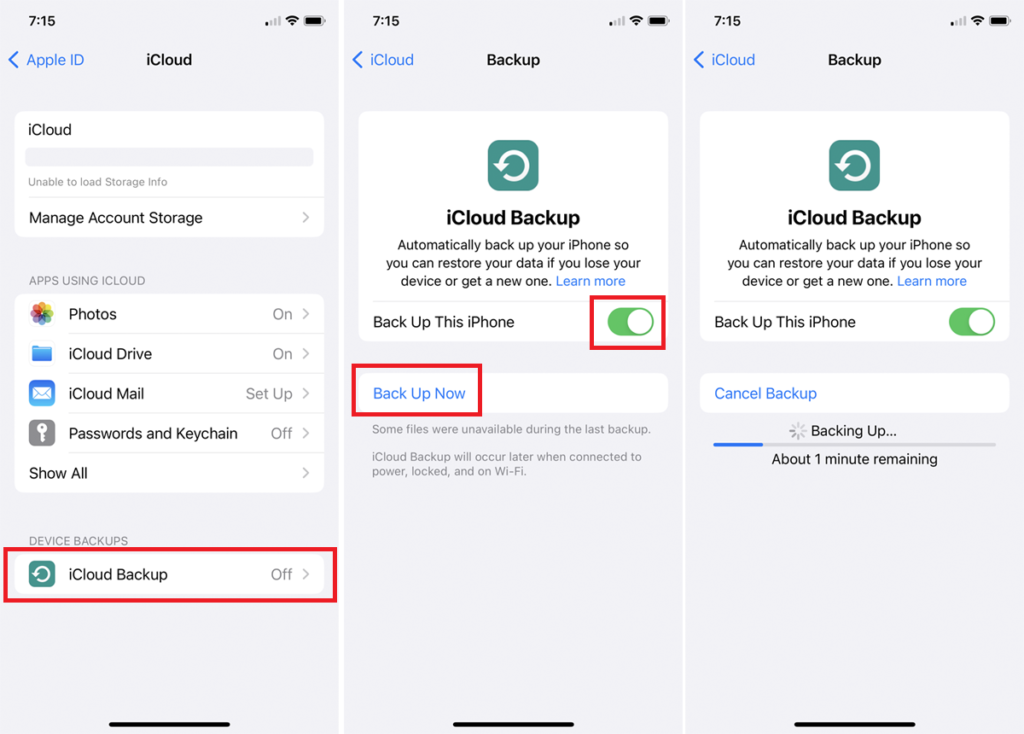
You can also back up your data directly from your iPhone by way of iCloud. On your phone, go to Settings and click your name. Tap iCloud > iCloud Backup, then turn on Back Up This iPhone and tap the Back Up Now button that appears. Your phone is then backed up to iCloud. Once the backup is completed, you can return to the iCloud settings screen to see how much space the backup ate up.
After you turn on iCloud Backup, a backup automatically runs every 24 hours after the last successful backup. For this to occur, your phone must be turned on, connected to Wi-Fi, hooked up to power, and the screen must be locked or off. If you connect the phone to your computer again, you will notice in iTunes or Finder that the option under Automatically Back Up is now set to iCloud.
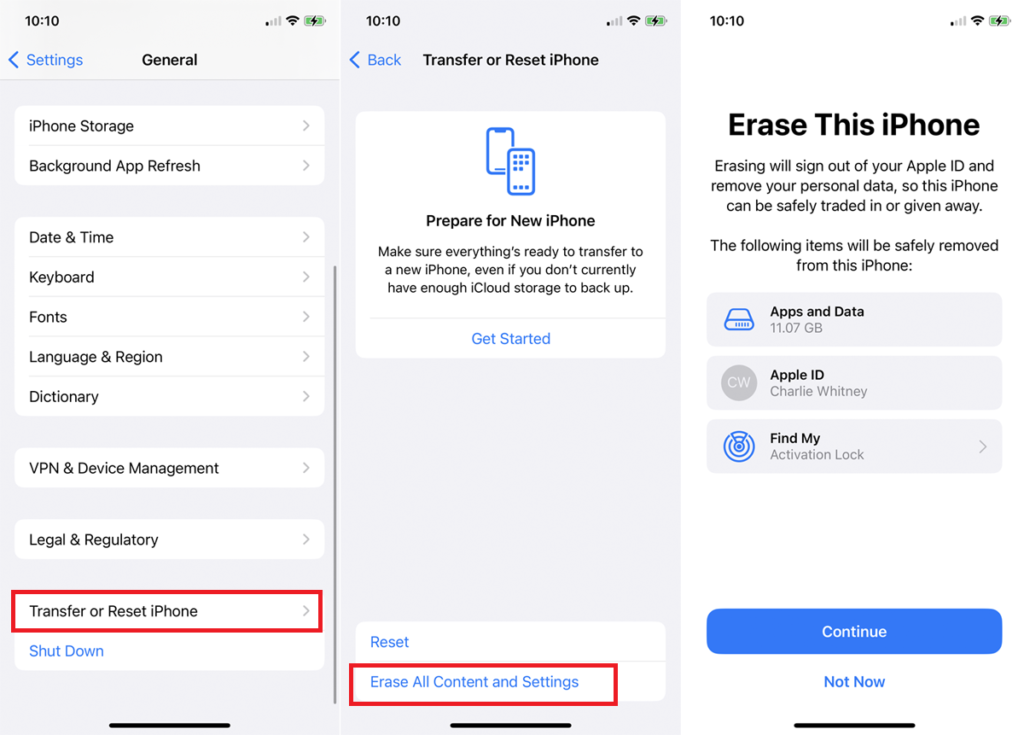
In the event that you need to restore the backup or set up a new phone, go to Settings > General > Transfer or Reset iPhone on your device. Tap Erase All Content and Settings. Confirm the content that will be removed and tap Continue.
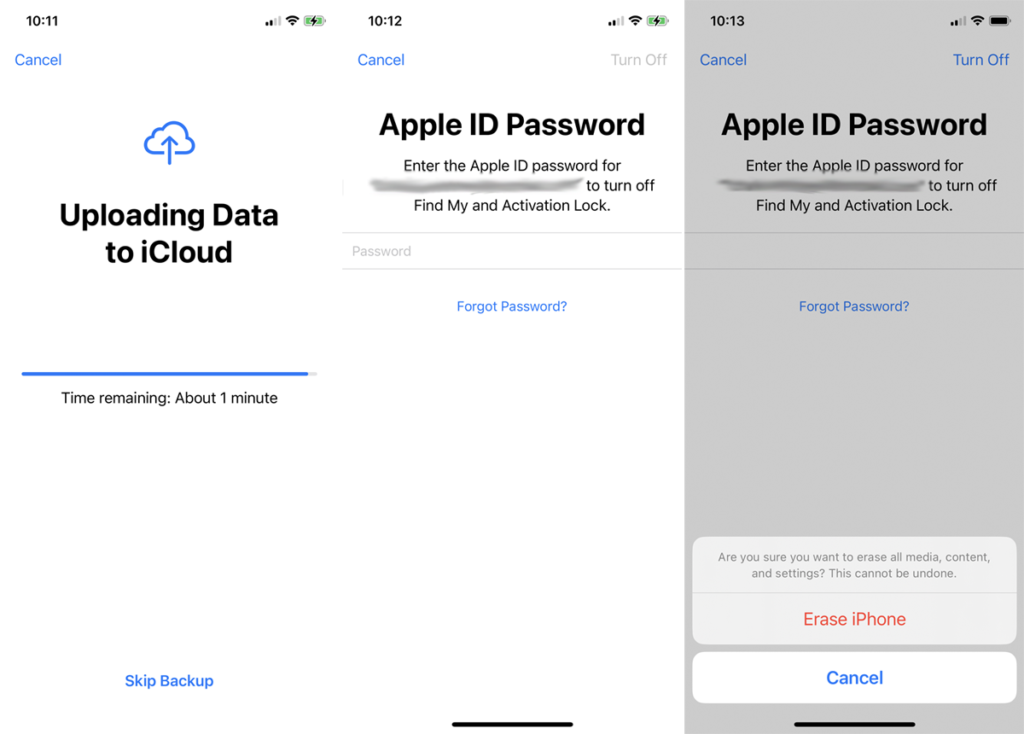
To proceed, enter your passcode. A backup may automatically kick off. Wait until that backup completes, or tap the option for Skip Backup. Enter your Apple ID password and tap Turn Off to disable the Find My and Activation Lock features. Finally, tap Erase iPhone to wipe the phone.
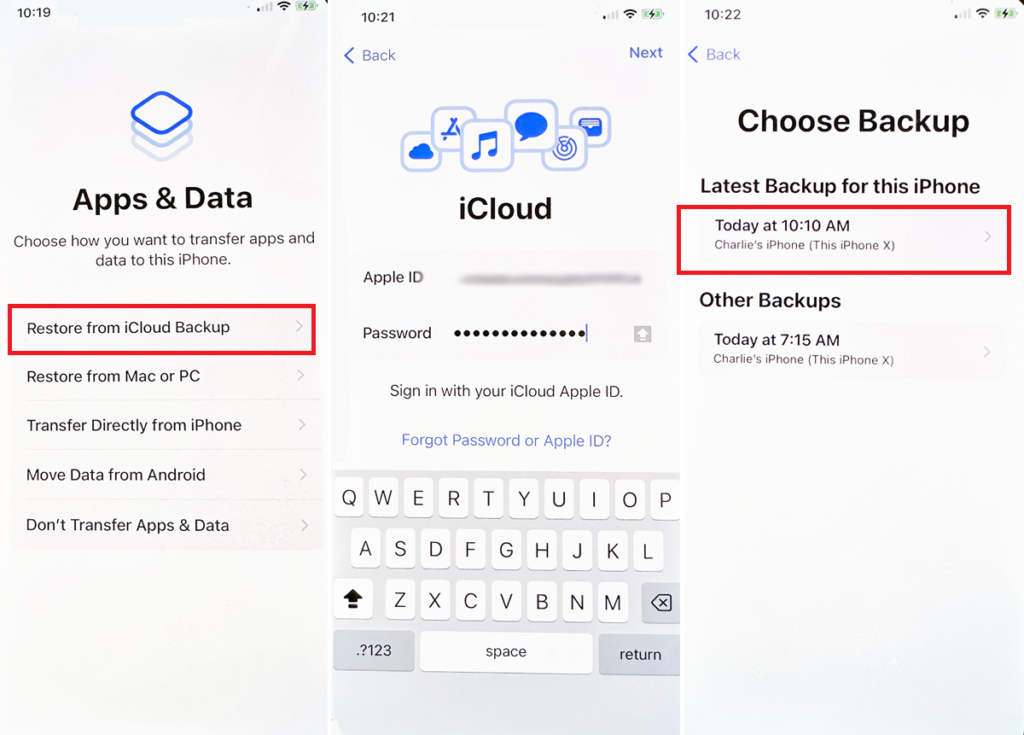
After your phone has been erased, follow the steps to set it up manually or automatically through another iOS device. At the Apps & Data screen, choose Restore from iCloud Backup and then sign into iCloud with your Apple ID and password. Tap the backup you want to restore. If you don’t see it, tap the Show All Backups link and select one from the list.

Choose the apps and settings you want to restore or just tap Continue to restore everything. You’ll be asked to set up such features as Apple Pay, iCloud Keychain, and Siri. Your iPhone is then restored from the backup and restarted. Sign in and wait for your apps to be installed and updated.
Back Up and Restore With Google One
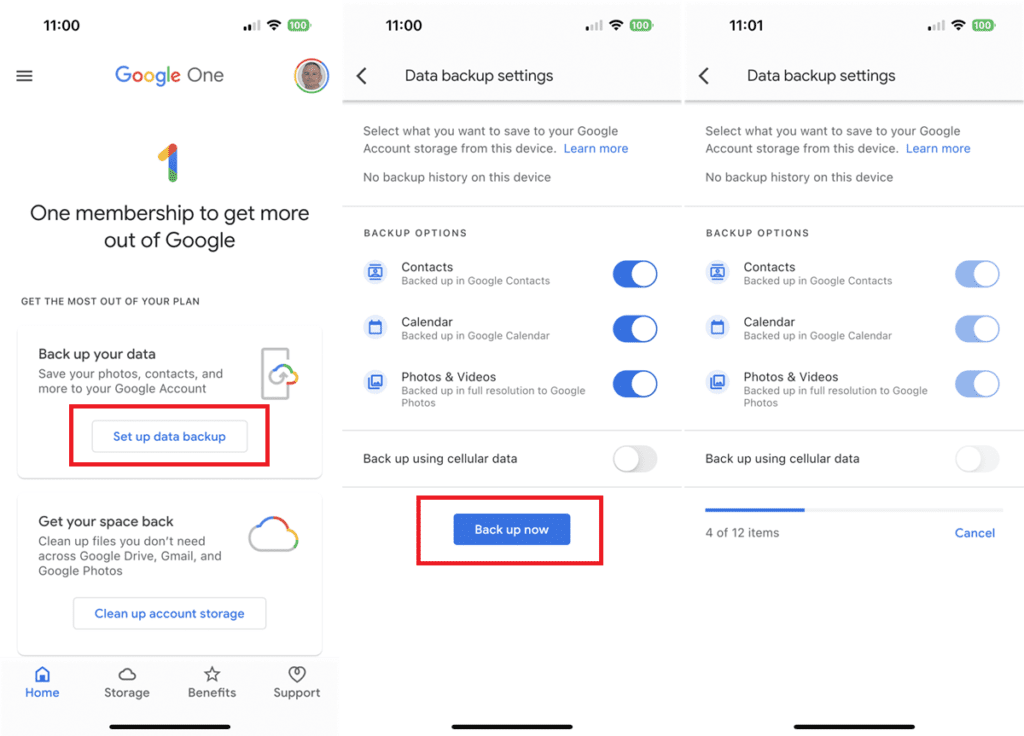
You can also back up your iPhone using Google One. This backs up your contacts, calendar, photos, and videos across Google Drive, Gmail, and Google Photos. First, download and install the Google One app from the App Store. Open the app and tap the Set up data backup button.
Select the content you wish to back up—Contacts, Calendar, and Photos & Videos—then decide if you want to back up the data over a cellular connection or limit it to Wi-Fi. Tap Back up now, and your data will be backed up to Google’s servers. You must keep the app open during this time, otherwise the backup will pause.
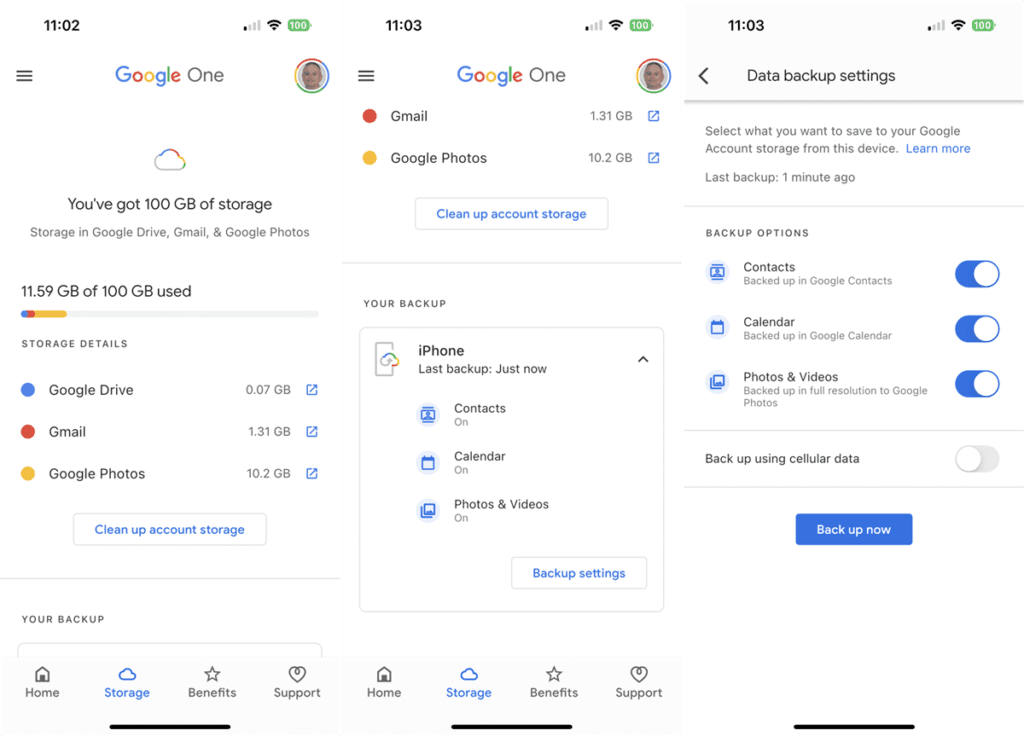
Return to the home screen and swipe down to the Storage section (or tap the Storage icon on the bottom toolbar) to see how much space has been used for the backups. The app’s graph shows how the data was allocated across Google Drive, Gmail, and Google Photos.
Swipe down to confirm what data was backed up from your current device. You can tap Backup settings to change which data gets backed up in the future. Since there is no restore function in the iPhone app, you’ll have to visit each individual service when you want to restore the data.


